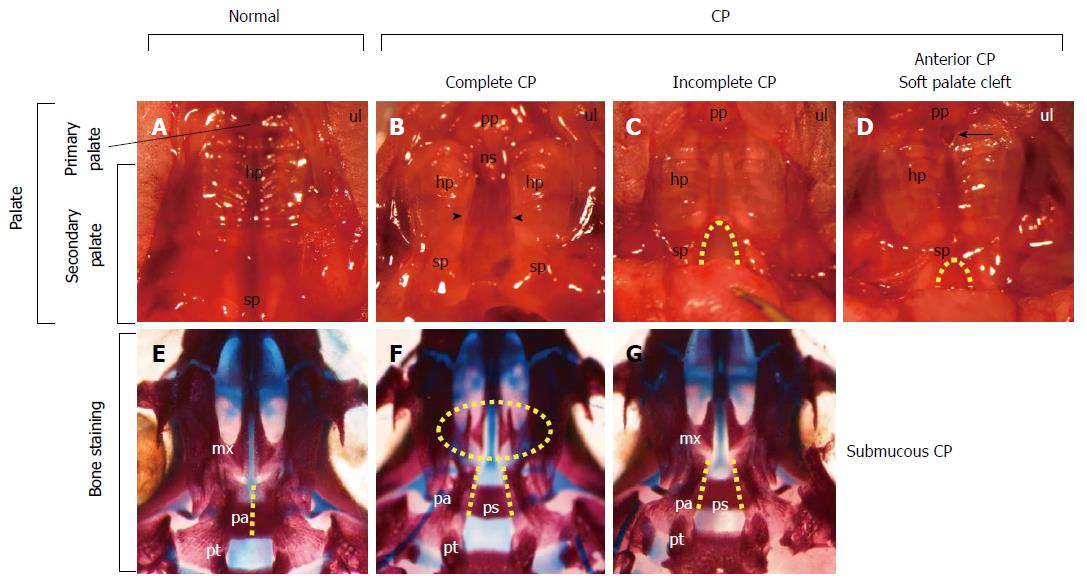Copyright
©The Author(s) 2015.
World J Biol Chem. Aug 26, 2015; 6(3): 121-138
Published online Aug 26, 2015. doi: 10.4331/wjbc.v6.i3.121
Published online Aug 26, 2015. doi: 10.4331/wjbc.v6.i3.121
Figure 2 View of the palate from wild-type and Tbx1-/- mice with cleft palates.
A-D: Ventral view of the maxilla of newborn wild-type (A) and Tbx1-/- mice with cleft palates (B-D). The palate consists of the primary palate (pp) and the secondary palate (sp), which consists of a hard palate (hp) and a soft palate (sp) (A). Tbx1-/- mice show complete cleft palate (CP) (arrowheads in B), incomplete CP (dashed line in C), and soft palate clefts associated with anterior CP (dashed line in D). An anterior CP (an arrow in D) is present at the junction between the primary palate and secondary palate, while the posterior palate remains fused; E-G: Ventral view of the cranial base of newborn wild-type (E) and Tbx1-/- mice (F, G) stained with alizarin red for mineralized bone and alcian blue for cartilage. Fusion of the bilateral palatal bones (pa) observed in the wild-type (dashed line in E) is absent in Tbx1-/- mice (dashed lines in F, G). The palatal shelves in the maxilla (mx) of Tbx1-/- mice with complete CP (oval dashed line in F) failed to grow toward the midline. Note the visible presphenoid bone (ps) associated with CP (F, G). Modified and used with permission from Funato et al[4]. ns: Nasal septum; pt: Pterygoid bone.
- Citation: Funato N, Nakamura M, Yanagisawa H. Molecular basis of cleft palates in mice. World J Biol Chem 2015; 6(3): 121-138
- URL: https://www.wjgnet.com/1949-8454/full/v6/i3/121.htm
- DOI: https://dx.doi.org/10.4331/wjbc.v6.i3.121









